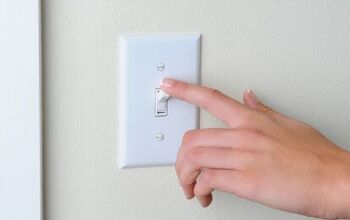How to Save $1000 in 5 Simple Steps, No Matter Your Income

If you feel like you cannot save money, live paycheck to paycheck, and have a negative number in your bank account, this article is for you. Today I want to teach you how to save $1000, no matter what your income is.
I have been saving money for a long time now, and I have developed a strategy that allows me to save money for anything. This is a five-step system, and you can apply it to any other amount, but for the sake of this article, let’s talk about the best way to save $1000.
1. Decide why you are saving
We cannot just wake up in the morning and say, I want to save $1,000 because it will never work. To succeed, you need a strong “why”. What are you saving for? Why are you saving this money? How is saving this money going to help you and your family?
You want to get super specific. If it is for emergencies, define what counts as an emergency.
Money flows where there is a purpose. If you try to save money arbitrarily, something will just come up and you will spend it. This is why we want to get very clear and very focused on what we are saving for.
2. Decide for how long you are saving
Now that you know your reason, you need to set yourself a timeline. Do you want to save $1,000 in a month, in three months, or a year?
This is very important because this is going to help you decide how much money you are going to save per week, per month, or per paycheck. Again, be specific: set a date by which you want to have saved this money.
3. Do the math
Divide how much you want to save by the time you have set to understand how much you need to save from every paycheck. If you decide that you want to save $1,000 in a month, divide that by four weeks: you have to save $250 per week.
If you wanted to save $1,000 in three months, you would have to put away $84 per week. If you get paid biweekly, that is about $170 every two weeks. If you wanted to save $1,000 in a year, that is $40 per biweekly paycheck.
4. Decide where you are saving
Many people skip this step, but it is crucial. Where are you specifically putting the money? It cannot hang out in your checking account, or in that savings account attached to your checking account, because you will spend it.
I suggest opening up a second account at a local credit union or at another bank. If you feel like you are someone who is going to dabble in the money, open up a Christmas account at a credit union. A Christmas account will allow you to deposit money for eleven months, and around Black Friday time they will let you withdraw the money.
Alternatively, you can open up another account and just roll those funds over. With a Christmas account, you will not have easy access to just go and withdraw that money, and there will be penalties for doing so.
You can save your money in coins in a jar, in cash in a jar, in the mattress, whatever you decide, but you do need to decide on a specific home for the money.
5. Save like a bill
First, you need a monthly budget. You need to know how you plan to spend your money. Your savings should be part of that plan, as it is a non-negotiable priority. Do not wait to spend everything else and save after. When you sit down, do your budget, and allocate your funds, you need to allocate your savings there.
Let's just say you have decided to save $1,000 in a year, making it $84 per month. In this case, in your monthly budget, put $84 as your emergency fund, along with your rent, electricity, phone bill, gas, groceries, and so on. Saving is not optional, it is part of your budget.
Let’s recap.
- Step one is deciding why you are saving and what you are saving for.
- Step two, decide how long you are going to be saving this money.
- Step three, do the math. Divide your $1,000 by the number of weeks or months to get the amount of money that you are going to be actually putting into your savings on a regular basis.
- Step four, decide where you're saving that money.
- Finally, step five, include your savings into your budget.
Even if you are living paycheck to paycheck right now, start off at $10 per paycheck and put it away into that separate account.
Do not deny yourself the opportunity to save money simply because you did not plan for it or you feel like the money is not there. There is definitely enough money there because you decided that it is. If that means you have to move around some of your expenses and decrease them in other ways, then that is exactly what you need to do.
How to save $1000
I hope you will try out this system and I hope it works out for you. What is your “why” – what are you currently saving or planning on saving for? Please share in the comments.





















Comments
Join the conversation
Yes!
Yes, I am going to try it better yet I'm going to do it.